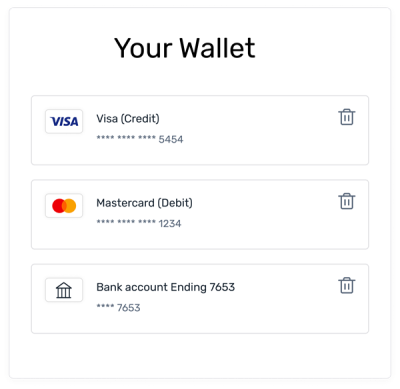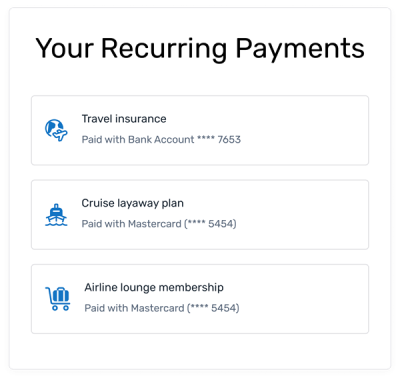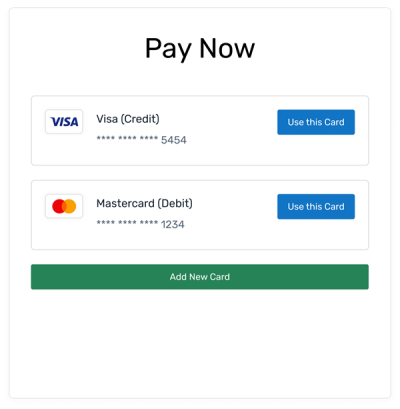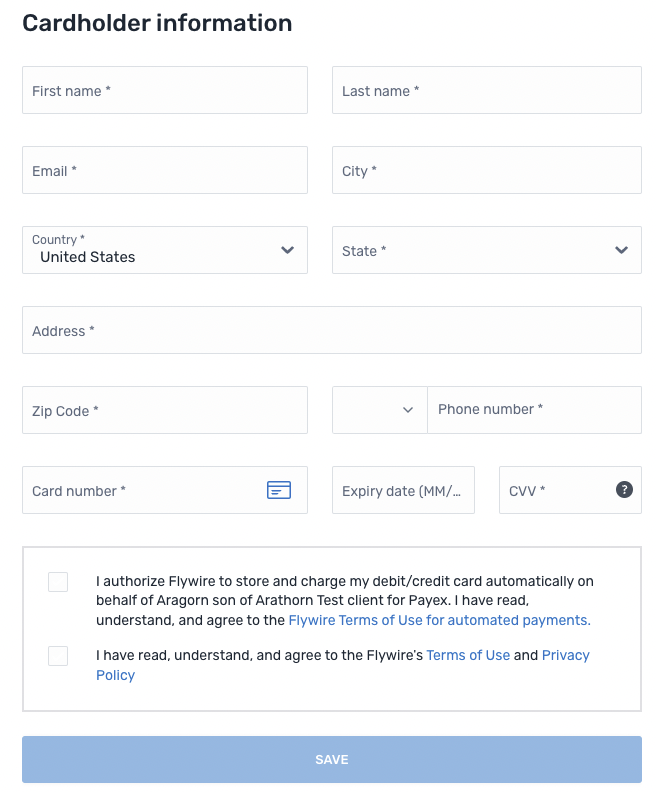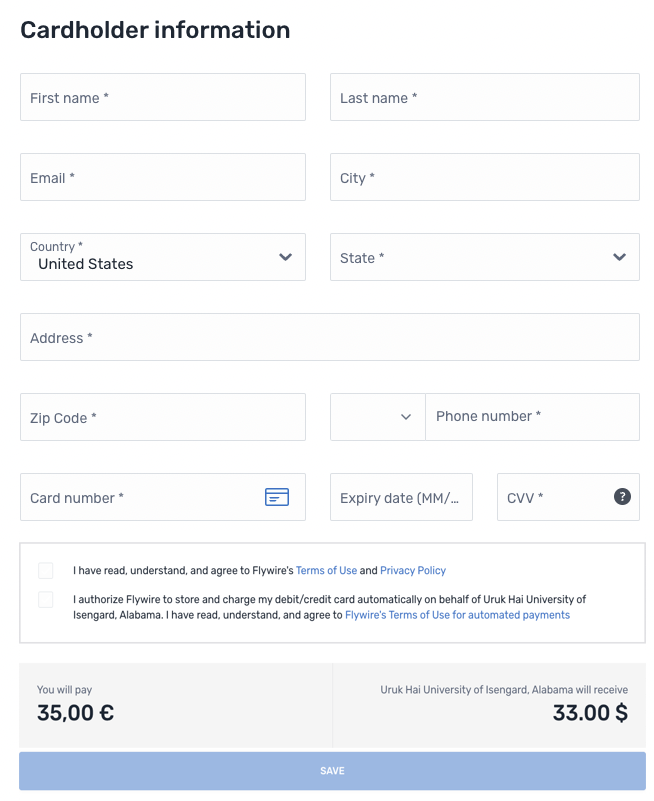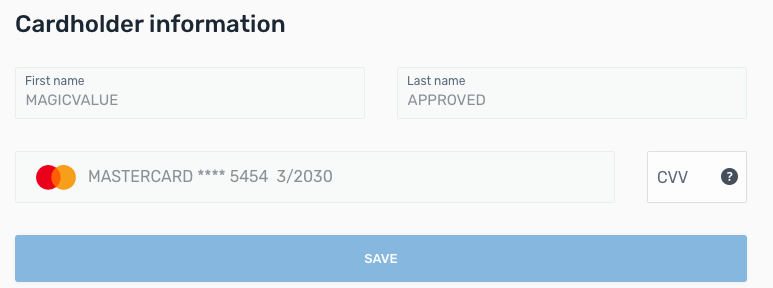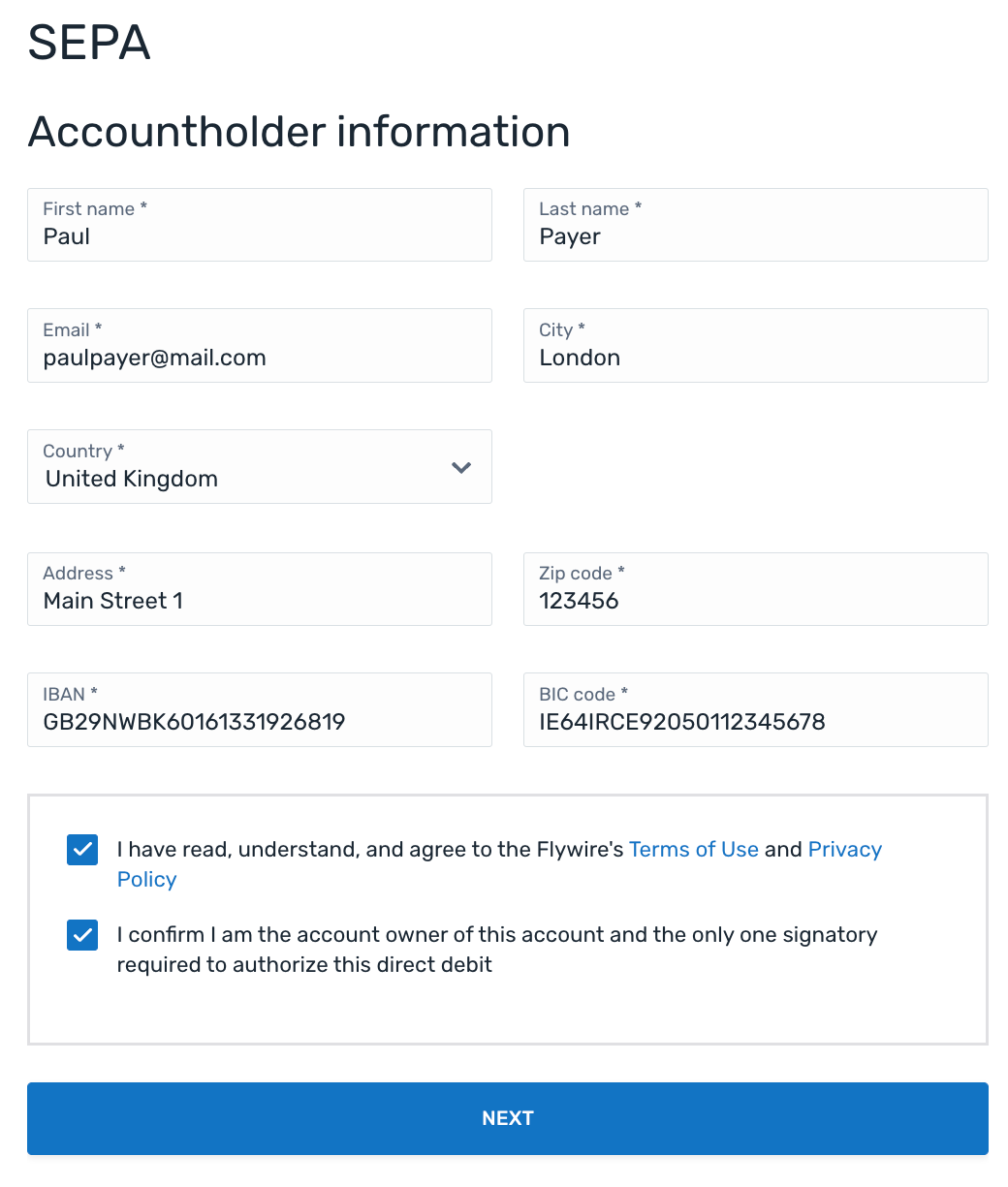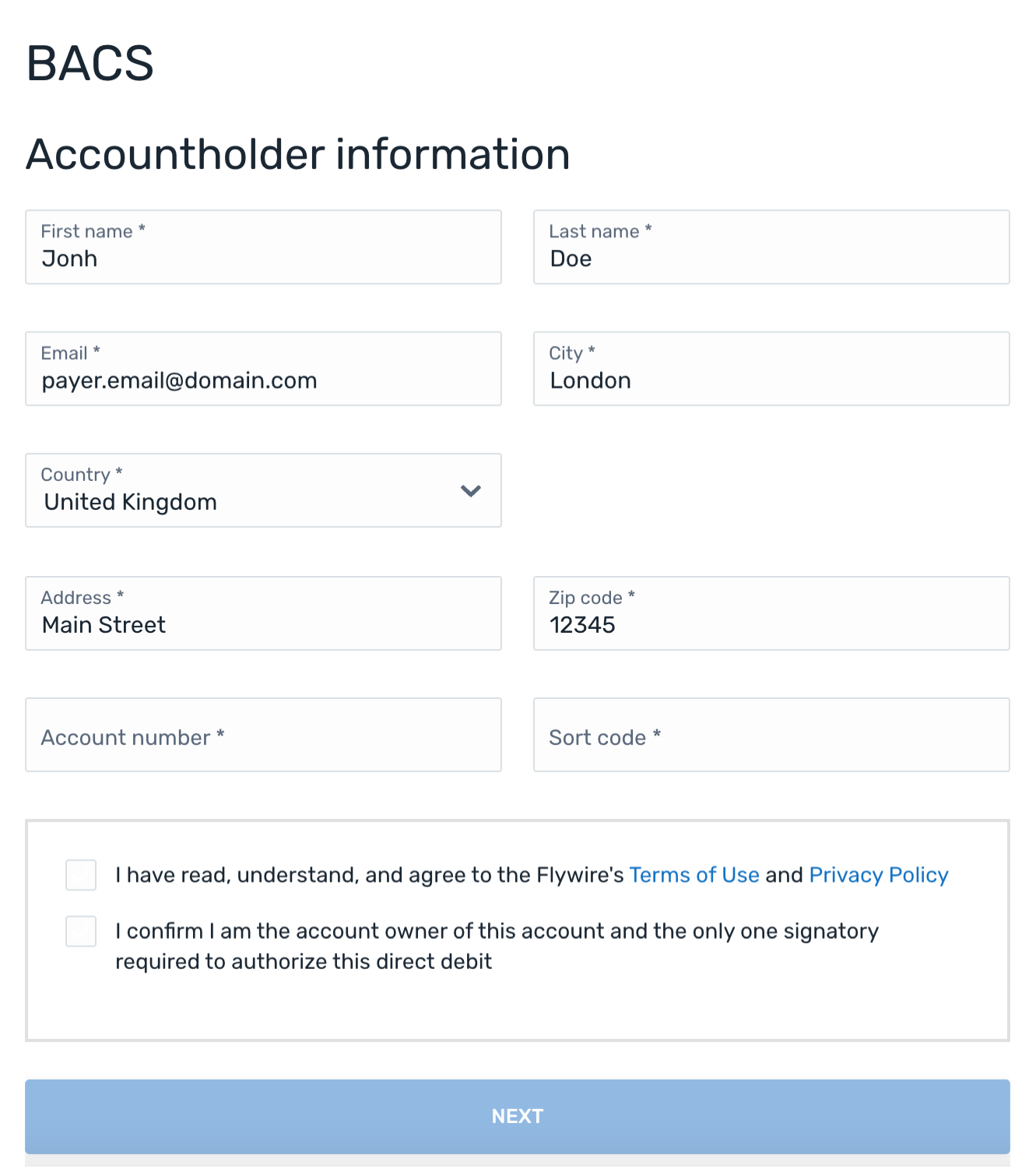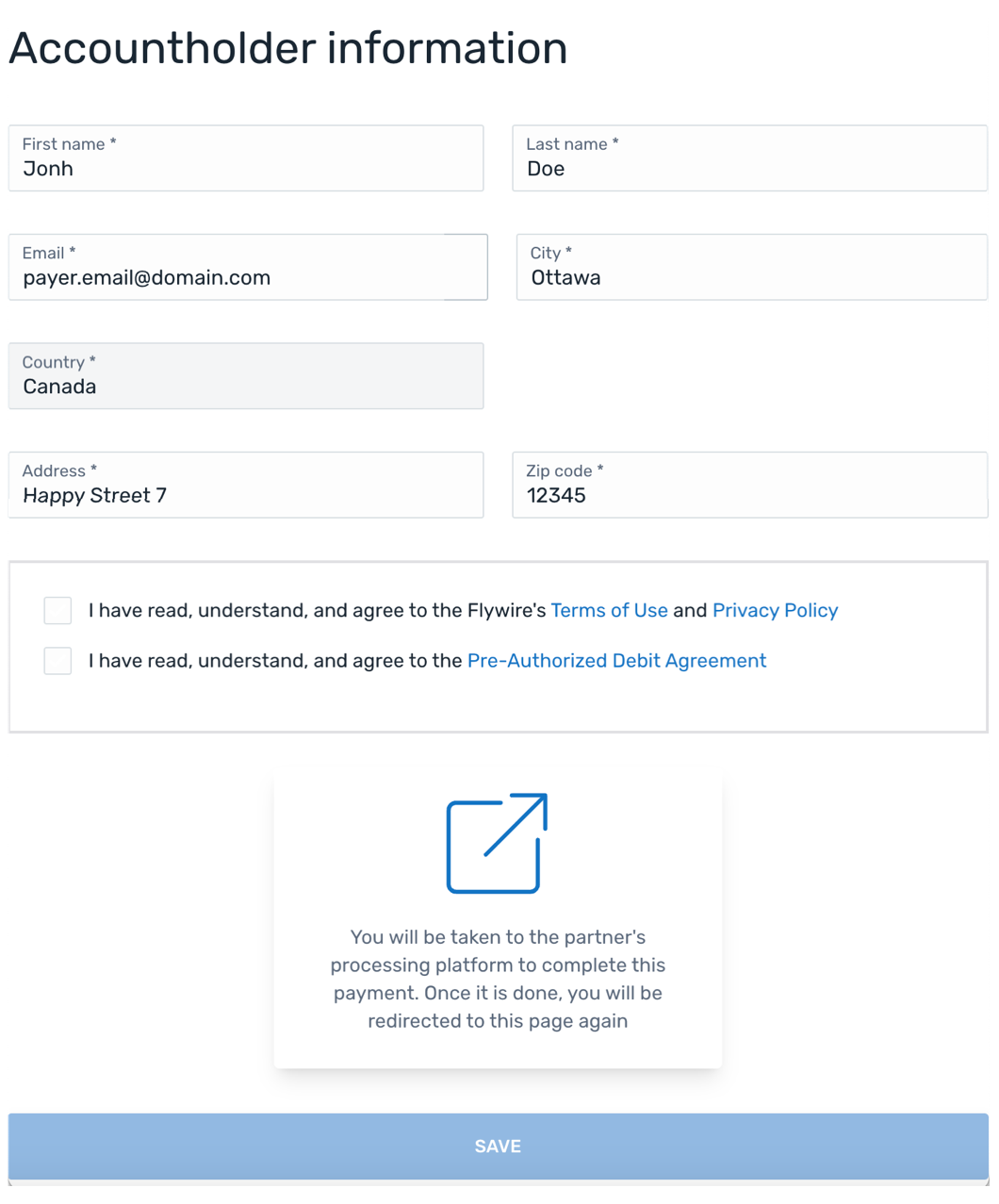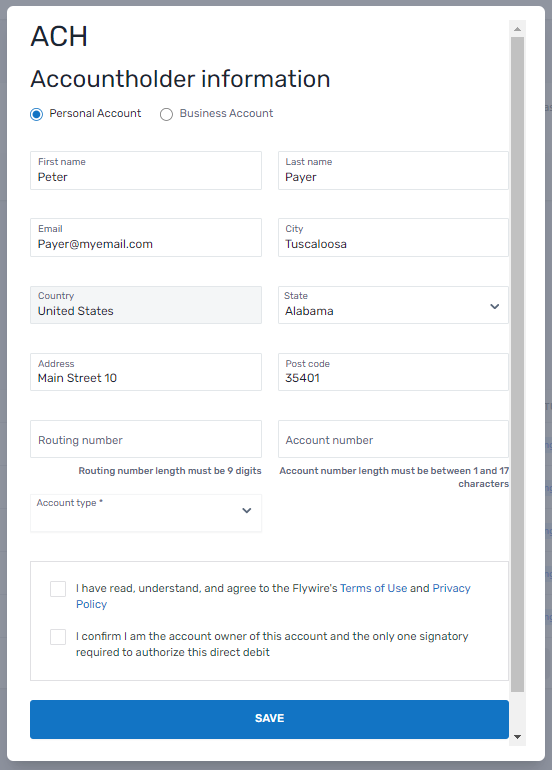Use Case: Payer Wallet
What is a Payer Wallet?
A payer wallet is a service that provides payers with access to their payment information, such as saved payment methods or installment plans. It can also allow payers to manage certain actions on their own, like using a saved card for a new payment or canceling an installment plan.
Payer Wallet for Recurring Payments
You can create payer wallets when you are using payment method tokens. You can't create payer wallets with commercial tokens.
| Payment method token | Commercial token |
|
The payment method token is a unique string of numbers and characters that gets assigned to a card or bank account when you store them via Flywire Elements. It identifies the payment method (e.g., last four digits of a card or bank account) and includes payer details, such as the cardholder or account owner. Format: String of 20 characters, for example: a1b2c3d4e5f67890abcd |
The commercial token is a unique string of numbers and characters that gets assigned to a card or bank account when they are stored via Checkout for Tokenization. It identifies the payment method and includes payer details. Format: Base64-encoded string, for example: eyJwYXlvcklkIjoiZmFrZS1wYXllci1pZCIsInRva2VuIjoiZmFrZS1jb21tZXJjaWFsLXRva2VuIn0= |
|
Differences in using them: |
|
Enables you to create a payer wallet
Enables you to use multiple mandates (multiple recurring payment plans) for one token
|
Cannot be used to create a payer wallet
Can only be used for one mandate
|
You can migrate a commercial token into a payment method token by simply using the commercial token for charging once. After the charge, the API will return a payment method token together with a mandate ID and a payer ID.
You can decide if you want to keep using the commercial token or if you want to switch to using the payment method token for this card or bank account. Flywire recommends using the payment method token.
You can use the endpoints of the Payors resource to display wallet information to your payer. Here are a few examples what you can display and how:
1) Manage payment methods
|
Display payment methods You can display the payer's saved cards and bank accounts by Getting a List of all stored Payment Methods for a Payer. If you want to know how payers can save cards and bank accounts in the first place refer to Creating a Checkout Session.
Deleting payment methods To enable your payer to delete their payment methods in their wallet, use Deleting a Payment Method for a Payer. |
2) Recurring payments overview - which payment method is used for what?
|
You can give your payer an overview about which card or bank account is connected to which payments. To display this mapping, you need to look up all mandate IDs (= the purpose of the payments) for the token that identifies the payment method, see Getting the Mandate IDs for a Payment Method Token.
Note that you need to have system in place that resolves the mandate_id coming from Flywire to a user-friendly description of the payment purpose, for example |
3) Use saved card for new payments
|
You can make it easy for your payers to use saved cards for new payments, you can combine two endpoints:
|
